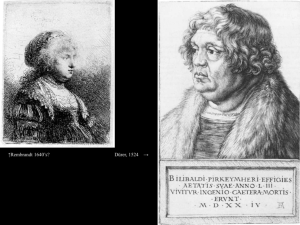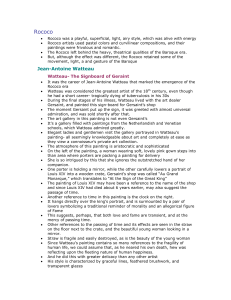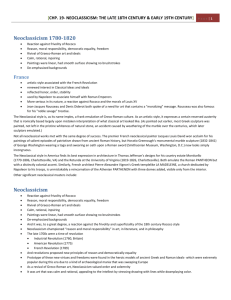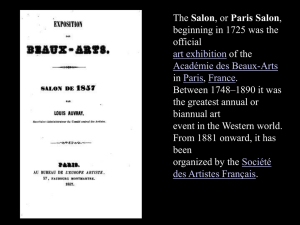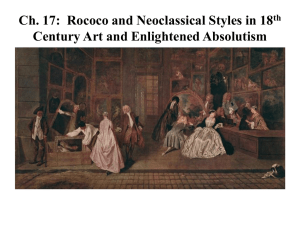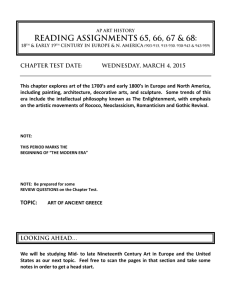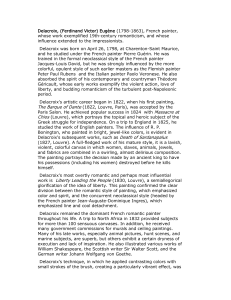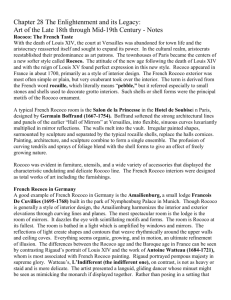Early Nineteenth Century Art Neoclassicism and Romanticism
advertisement
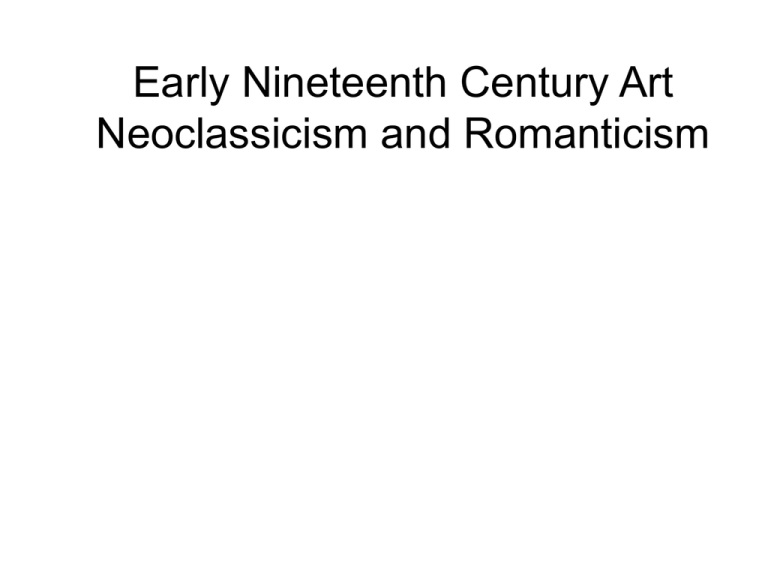
Early Nineteenth Century Art Neoclassicism and Romanticism Neoclassicism • Neo (new) Classicism (refers to Ancient Greek and Roman times) • The artists of this period admired the work of ancient Greek and Roman artists and sought to emulate the values that characterized classical art: simplicity, harmony, balance, stability, dignity, nobility, and heroism. • Major Neo Classic Artists: – Jacques Louis David – Jean-Auguste-Dominique Ingres A Reaction to Rococo • Every movement is art is a reaction of some kind to what preceded it. Tastes change and the pendulum swings from one side of the spectrum to the other. • Although we will be looking primarily at painting, the architecture of each period reflects the contrast quite clearly. Compare Rococo extravagance with Neoclassic austerity in these next slides. A return to austerity • The Rococo period that preceded Neo Classicism was characterized by excess, by ornamentation, and frivolity. The palace of Versailles, where the French kings lived in the 1700s, is the best example of Rococo tastes. The Hall of Mirrors at Versailles Compare this with the Neo Classic taste for simplicity, order, and restraint. Jacques Louis David • David was foremost among the painters of the Neo Classic period. • He lived from 1756 to 1825, and was therefore caught up in the revolution that swept the French monarchy out of power in 1789. • David’s paintings reflect support for the revolutionary ideals that led to the overthrow of the Louis XVI and Marie Antoinette: liberty, equality, fraternity • He eventually became a court painter and propagandist for the Emperor Napoleon 1, who came to power after the French Revolution and the Reign of Terror. David- The Oath of the Horatii 1784 David – The Death of Marat - 1793 David – Napoleon in his Study 1812 David – The Coronation of Napoleon – 1805/1807 Jean-Auguste-Dominique Ingres • Ingres was a pupil of David. • Although he too painted large political works, he is best remembered for his virtuoso portraits. • These portraits, and his classical nudes have a timelessness and calm that transcend any passing political issues or events. • Ingres believed that line was the most important element in painting. Look for his superb use of graceful line in the following paintings. Ingres – The Bather of Valpincon 1808 Ingres – Mme Moitessier - 1851 Ingres – Mme Moitessier - 1856 Ingres – Comtesse d’Houssonville 1845 The Romantics Eugene Delacroix and Theodore Gericault – The artists of the Romantic period portrayed dramatic and exotic subjects – Their images were full of intense feeling – Paintings from this period were much livelier than the work of the Neoclassicists. They were often full of movement, with more swirling and dynamic compositional lines Gericault The Raft of the Medusa - 1819 Delacroix – The Lion Hunt - 1861 Delacroix – Liberty Leading the People - 1830 Delacroix – Arabs Skirmishing in the Mountains - 1863 Delacroix – Women of Algiers 1834
